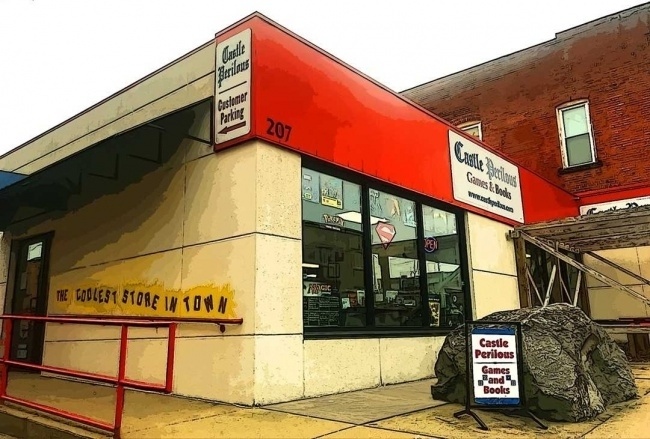Rolling for Initiative is a weekly column by Scott Thorne, PhD, owner of Castle Perilous Games & Books in Carbondale, Illinois and instructor in marketing at Southeast Missouri State University. This week, Thorne looks at the back-ups at U.S. ports and ahead to when they might clear.
Last Wednesday NPR had a story taking a look at the back-up at the Ports of Los Angeles and Long Beach. The story interviews Ryan Peterson, CEO of Flexport, a supply chain management company, who hired a boat to take him around both of the ports so he could see what was happening out there and why there was such a bottleneck when normally freight moves through them very smoothly. Here is the Twitter thread referred to in the NPR story, which as of this writing, has over 11,000 retweets.
On his three hour tour (reminds me of Gilligan’s Island but at least he made it back), he noted the following:
- In three hours, out of thousands of containers waiting to get unloaded, he saw less than a dozen removed from their container ships.
- Out of the hundreds of cranes at the two ports, he counted only 7 operating and those seven were “going pretty slow”. In normal times, a crane can unload a container from a ship in about 73 seconds and empty a ship completely in 1-3 days. In China, possibly because of fewer regulations, a crane can load a container onto a ship in about 28 seconds.
- Roughly 70 ships with approximately 500,000 containers offshore, waiting to unload.
- Hundreds of thousands of empty containers sitting in yard space at port terminals waiting to get moved to offsite holding yards.
This last, according to Peterson, is the crux of the shipping bottleneck. Once the containers get unloaded and emptied, there is currently no place to put them. In normal circumstances, an empty truck would go to a port terminal, pick up a container, deliver it, drop the empty container at a storage yard or return it to the port terminal, either empty or full of goods for shipment out of the terminal and pick up another container for delivery. That has broken down.
As several stores have noted, once they got the opportunity to do so, people spent a LOT of money in them over the past year and a half (see “Rolling for Initiative: Sales Are Booming“). Typically, Americans spend more on services, such as restaurants, movies, medical care, theater, etc, than we do on physical items. With the concern about spreading COVID-19, that changed. Shipments of goods started flooding across the Pacific, about twice as much as normal (see “Rolling for Initiative: Unraveling the Supply Chain“). So what is happening now, as Peterson notes in his thread, is a collision between the economy and legal restrictions, specifically zoning. For safety reasons, current zoning regulations for the area only allow storage yards to stack empty containers two high. Yards are filled, meaning overflow empty containers either have to be stored on empty truck chassis, meaning they cannot haul full containers or left at the port terminal, which also has no storage space. Things are so bad that Exploding Kittens seriously considered hiring a helicopter to fly out to the ship with their product and loading it directly onto the copter, according to Digital Commerce 360.
What to do? After reading Peterson’s thread, the mayor of Long Beach temporarily raised the number of containers stacked to four in certain areas, which helps some but likely needs expansion throughout the Long Beach and Los Angeles area through 2022. Opening some unused city, state or federal property for storage would help as well. Such a temporary fix would go a long way toward unclogging the bottleneck.
People buying less stuff will also alleviate the problem, and I have read of several stores reporting sales slowing down from earlier this year. With the economy opening back up, people will continue to shift their purchases from products to services, relieving the stress on the supply chain. Though it won’t help for the holiday season, I expect to see the supply chain back to normal by mid-2022.
What do you think? Post in the comments or email me at castleperilousgames@gmail.com.
The opinions expressed in this column are solely those of the writer, and do not necessarily reflect the views of the editorial staff of ICv2.com.
Source: ICv2


